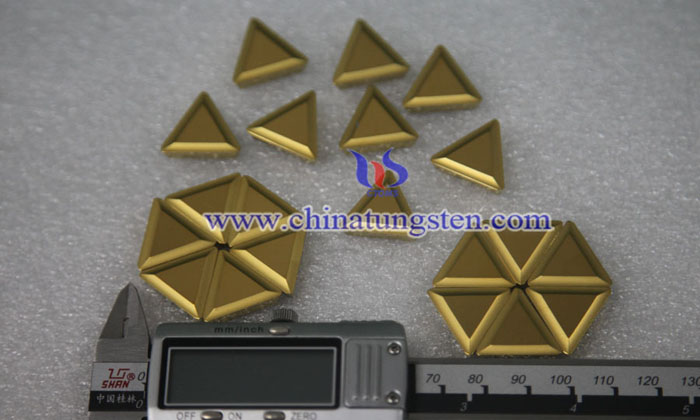Tungsten Carbide Inserts Market–Producing a Great Deal of Profit 2017–2025
- Details
- Category: Tungsten's News
- Published on Monday, 12 March 2018 14:28
Inserts are large-sized pieces of abrasive materials obtained by sintering a precursor powder into a consolidated mass. They are available in various shapes such as disks, rhombus, and triangles. The shape of the insert required in a tool is determined by the type of application. Commonly used cutting tool inserts are manufactured from ceramics (such as ceramic aluminum oxide and ceramic iron oxide) and carbides (such as silicon carbide (carborundum) and boron carbide).
Tungsten carbide inserts, also known as cemented carbides, are composite materials. They are exceptionally hard materials employed in various industrial applications. For instance, they are used as cutting tool materials. Tungsten carbide inserts are manufactured as composites of carbide compounds cemented by a binder metal. Tungsten carbides that are commonly utilized in the manufacture of inserts include silicon carbide, boron carbide, and tungsten carbide. Sometimes, titanium carbide and tantalum carbide are also used as aggregates in tungsten carbide inserts.
Tungsten carbide inserts undergo coating in order to increase the life of carbide tools. Commonly used coatings are titanium nitride (TiN), titanium carbide (TiC), titanium carbide-nitride (Ti(C)N), and titanium aluminum nitride (TiAlN). Typically, lubricity and/or hardness of the tool increases when coatings are applied. Coating enables the clean pass of the cutting edge of a tool through the material. Temperature accompanying the cutting process also decreases due to coatings. This increases the tools’ life.Deposition of coatings is typically carried out with the help of the thermal chemical vapor deposition (CVD) method. Certain applications require deposition of coatings with the mechanical physical vapor deposition (PVD) method. Deposition of coatings is an intricate process; complications in the process can result in adhesion failure of the coating.
Tungsten carbide inserts and other tools are able to withstand higher temperatures vis-à-vis standard high-speed steel tools at the point of contact between the cutter and work-piece. This enables tungsten carbide inserts to perform better surface finish of the work-piece and faster machining process.In comparison, other typical materials employed in the manufacture of machining tools (including inserts) are cheaper than carbide. Furthermore, carbide is more brittle. This increases its susceptibility for chipping and breaking. In order to avoid this, the cutting tip is formed in the shape of a small insert, which is mounted on the tool body made from another material (such as carbon tool steel). This also provides the benefit of using carbide at the cutting interface without the high cost and brittleness of making the entire tool out of carbide.
- Tungsten Carbide Manufacturer & Supplier, Chinatungsten Online: tungsten-carbide.com.cn
- Tungsten News & Prices of China Tungsten Industry Association: www.ctia.com.cn
- Molybdenum News & Price: news.molybdenum.com.cn
- Tel.: 86 592 5129696; Fax: 86 592 5129797; Email: sales@chinatungsten.com




 sales@chinatungsten.com
sales@chinatungsten.com